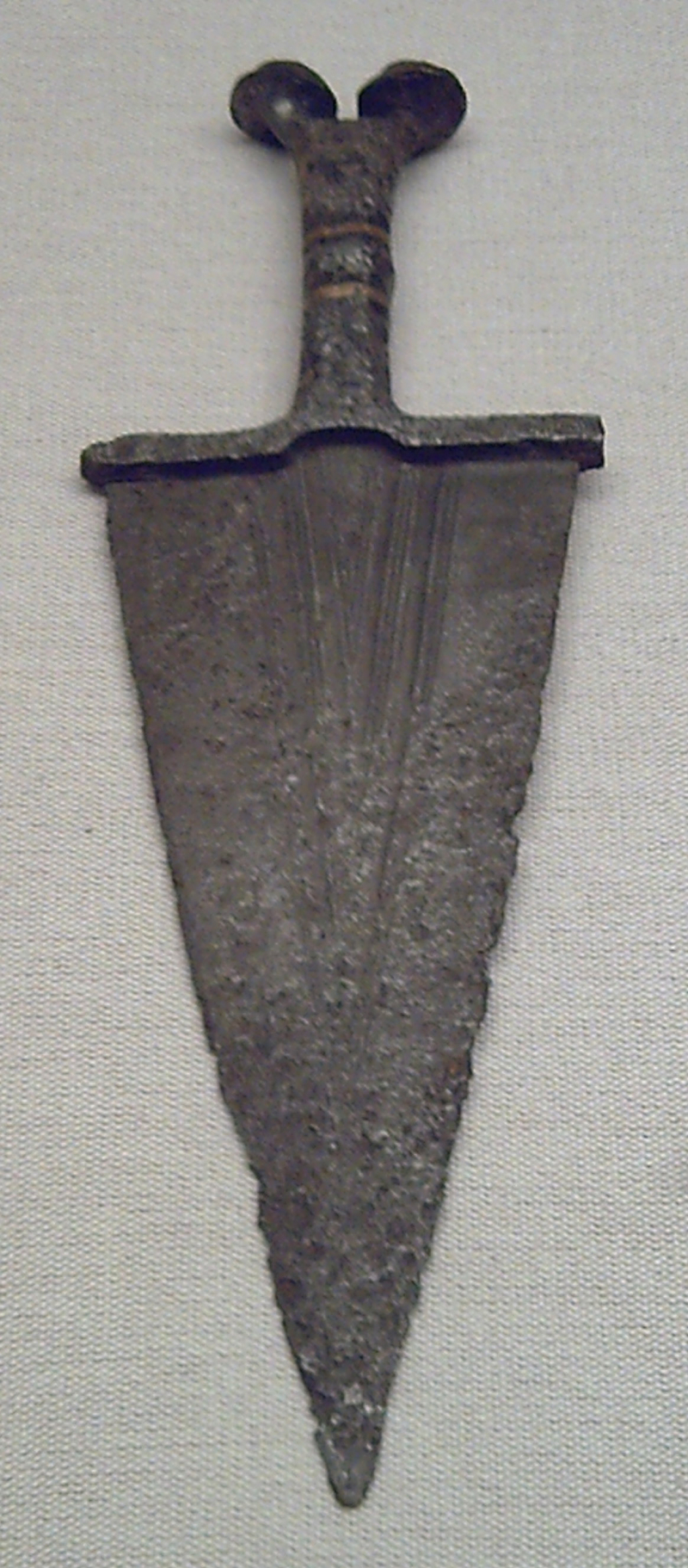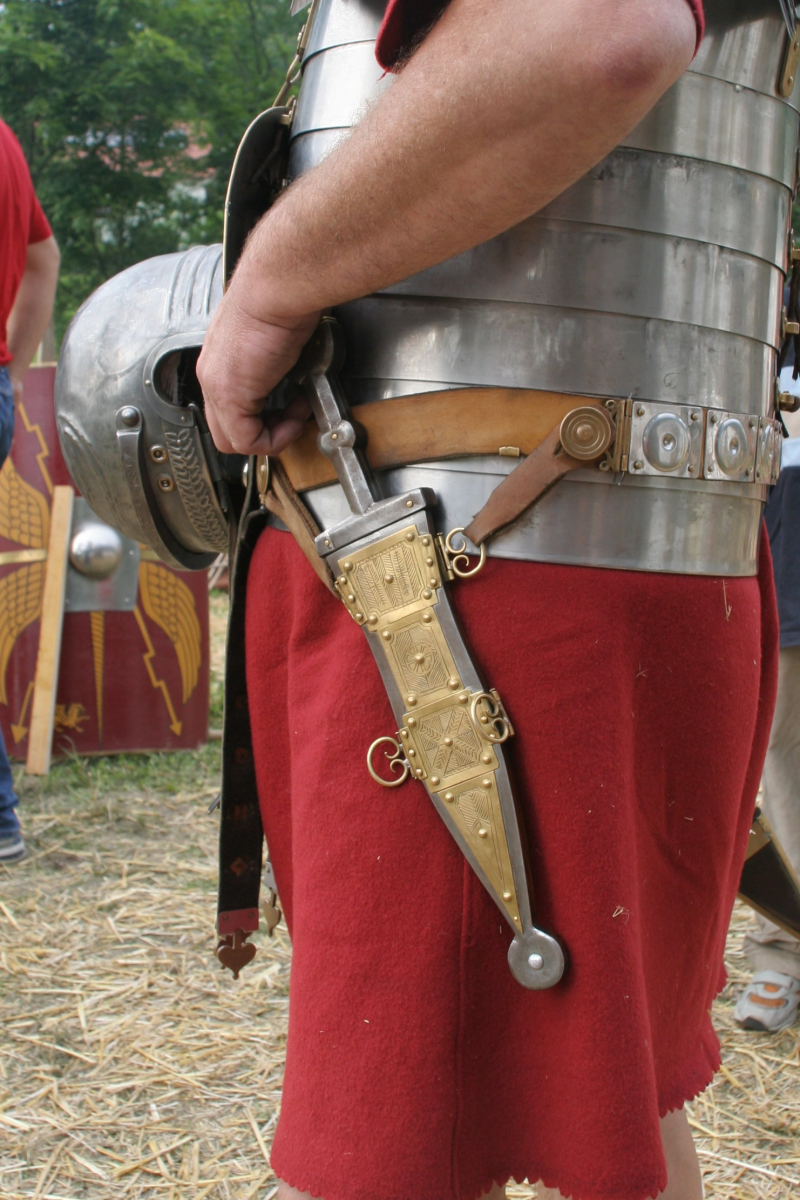Pugio

Roman troops carried a pugio (a dagger) as a sidearm. The pugio was most likely designed to be a support weapon for the soldier, although its precise function is still unknown. Empire officials began donning elaborate daggers while doing their duties, and others wore concealed daggers for defense in emergency situations. A common assassination and suicide tool was the dagger; for instance, the conspirators who stabbed Julius Caesar used pugiones. The Cantabrians of Iberia wielded daggers, which gave rise to the pugio. The pugio was possibly a stabbing weapon, similar to the gladius, which is the kind of weapon Romans claimed to have liked. The late Roman writer Vegetius claimed that they were the main method of battle adopted by the Romans.
The pugio normally had a big blade by the first century. There were various types of blades. "Leaf-shaped" was one type. Another variety included narrow areas close to the shoulders. It was parallel for roughly half the length of the blade and then drew to a point. Nearly the whole length of each side was made up of midribs, which either protruded from the face or were recessed and delineated by grooves on either side. A grip was riveted through the wide, flat tang and the shoulders of the blade as well as through the tang. The pommel was originally circular, but by the early first century, a round and trapezoidal pommel had taken its place. It frequently has three ornamental rivets on top.
The dagger experienced some modifications during the first fifty years of the first century AD, much like other pieces of legionary gear. When rod tangs were developed, the hilt was merely fastened at the shoulders of the blade and no longer riveted through the tang. Even though the archaeological evidence strongly suggests that the rod tang was less secure and that handles attached in this way could become detached, the existence of two remaining pugiones from various sites that both retain replacement handles, one of which is a recycled sword grip, may prove that this did not significantly alter the pugio's appearance. Some of the blades connected to rod tangs were smaller (less than 4.5 cm (1.75 in) wide), had little to no waisting, or had midribs that were barely there or nonexistent.
The hilt's general shape didn't change much over the period of time. Similar to the earlier era, it was constructed with two layers of horn, wood, or bone sandwiching the tang and each covered in a thin iron plate. The iron plate could either be solid and get thinner at the guard and pommel expansion, which were both roughly trapezoidal in shape, or it could be made of thin metal that was embossed to have this shape. Silver inlay was frequently used to embellish the hilt. Although the grip is relatively small, the existence of an extension in the middle of the grip allows for a very firm hold. The hilt is 10 cm to 13 cm (4 in - 5 in) long overall.











